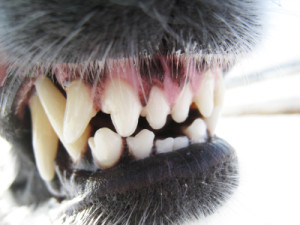 My column today, “10 dog breeds that rile insurers up,” discusses how your pet’s breed could cause some companies to deny coverage or charge you more.
My column today, “10 dog breeds that rile insurers up,” discusses how your pet’s breed could cause some companies to deny coverage or charge you more.
The breeds include various types of terriers commonly called “pit bulls,” as well as Dobermans, Rottweilers, German Shepherds, Huskies, Cane Corso and Mastiffs.
These so-called “breed lists” aren’t used by all insurers and tend to change as the types of dogs involved in attacks change (something that’s often related to breed popularity). There’s a reason that “nippy” dogs such as Chihuahuas and dachshunds aren’t on these lists: although they may be more likely to bite, they can’t do the damage that a bigger breed can. The average insurance claim for a dog bite is nearly $30,000, which implies a whole lot of pain.
If you own a dog that’s on an insurer’s breed list, or if you simply want to avoid expensive lawsuits and the possibility of harming others, there are plenty of ways to reduce your liability to dog bite claims. Among them:
Shop around. Every insurer has different criteria, so getting quotes from a number of different companies can help dog owners find coverage. An insurance broker who is knowledgeable about various insurers’ policies can help with the search. Larger insurers may be more accommodating than smaller ones. For example: State Farm, the largest homeowners insurance company, says it does not discriminate by breed but does require dog owners to answer questions about their animals’ history and behavior.
Spay and neuter. Sexually intact dogs are more likely to bite than spayed or neutered animals, according to the Centers for Disease Control and Prevention.
Mind your kids. Don’t leave infants or young children alone with any dog, the CDC advises. Teach children not to approach unfamiliar dogs and to remain still if approached by dogs they don’t know, or to roll up into a ball and stay motionless if knocked down by a dog. (If an unfamiliar dog is leashed and with its owner, make sure your child asks the owner first if the dog is friendly and if it’s okay to approach. Your child should know to let the dog sniff first before petting.) Kids should be taught not to disturb dogs that are eating, sleeping or tending puppies. Most dog bites occur “during everyday activities and while interacting with familiar dogs,” according to the American Veterinary Medical Association, so be vigilant about how your child behaves with dogs. Don’t let a child or anyone else tease or threaten a dog.
Don’t encourage aggression. Wrestling or even tug-of-war can trigger aggressive behavior in your pet. Dogs that have already demonstrated such behavior (lunging, biting) “are inappropriate in households with children,” the CDC notes. Yes, such dogs can be trained, but the risk to your kids is too high.
Socialize and train your dog. The CDC recommends teaching all dogs “submissive behaviors,” such as rolling over to expose their belly and giving up food without growling. Training can help with these behaviors and others that can make dog ownership easier. Shelters and pet stores are two places to look for low-cost training. Use a leash in public so you can control your dog, the AVMA advises.
Dog bites are no joke. They send some 800,000 Americans every year to emergency rooms and other medical providers for treatment, according to the AVMA. Half of those victims are children, since kids are much more likely to be seriously injured if bit. (I was going to include a photo of what a dog bite did to a young girl’s arm, but decided it was just too graphic.) Senior citizens are the next most common victims.
So do the right thing. Your dog–and your neighbors–are counting on you to be a responsible owner.